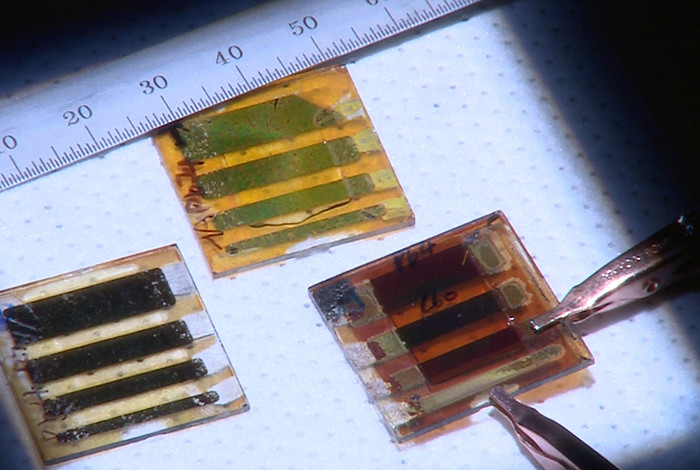Cheap solar for Northern New Mexico

Researchers have developed a new type of two-dimensional, layered perovskite with outstanding stability and more than triple the material’s previous power conversion efficiency.
The solar photovoltaic (PV) panels that are common on neighborhood rooftops rely on silicon semiconductors to capture the sun’s rays and convert that light into electricity. For 70 years, silicon has been the PV semiconductor of choice. The technology is well understood, and its 25 percent efficiency has been enough to create market-viable solar panels.
Although PVs have fallen in price recently, silicon solar cells have hit a hardened cost/energy-efficiency constraint that hinders progress toward a world powered largely by pollution-free, solar-generated electricity. Several opportunities also exist for low-cost, flexible solar cells to be used as remote power sources, which this technology can certainly satisfy.
Sensing an opportunity for science to provide a solution that could bolster the nation’s energy portfolio, Los Alamos National Laboratory formed the Light to Energy team in 2013. The team’s goal, which reinforces the energy security component of the Lab’s mission, is to develop clean energy by providing low-cost, commercially viable technologies. So this small team turned to an intriguing class of materials called perovskites, which could complement silicon in solar cells.
Discovered in 1839, perovskites are characterized by a specific crystalline structure. About 40 years ago, materials scientists synthesized organic and inorganic compounds into hybrid perovskites that preserved the unique crystalline structure and behaved like a semiconductor—useful in many electronic applications.
Aditya Mohite, the team’s principal investigator, believes that local implications of this work exist. Because of its very low cost, local farmers could have this new technology installed on rooftops of farm buildings. This same technology could also be useful for any application requiring remote power to run smart gadgets.
Living in Northern New Mexico has greatly influenced Aditya’s work. New Mexico boasts an average 300 days of sunlight—the perfect climate to study this technology. Also, the mountains of Northern New Mexico remind us of how close to nature the Laboratory is.
“Sometimes it’s easy to take our surroundings for granted,” Aditya says. “We scientists tend to travel with our work, and as we spend more time here, we see that the levels of pollution and carbon emissions are much lower than in bigger cities. Realizing what a special place we live in motivates us to develop cleaner energy forms—instead of using fossil fuels—so we can preserve the environment.”






